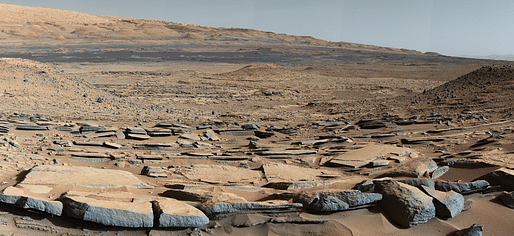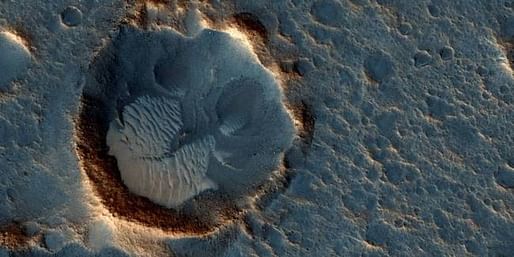

Living off the land is different when the land is 140 million miles away, so NASA is looking for innovative ideas to use in situ (in place) Martian resources to help establish a human presence on the Red Planet. — NASA

After NASA announced strong evidence of the presence of liquid water on Mars, efforts to bring Earthlings to the red planet seems to be picking up steam. Elon Musk is talking about nuking its poles and design competitions, like the 3-D Printed Habitat Challenge, are increasingly looking at extraterrestrial design, garnering responses by such luminary architectural forces as Foster + Partners.
Now, NASA has launched a competition calling for innovative Martian structures to be built in situ with locally-available resources.
Mars is 141 million miles away, which means even an extra carry-on will cost you. So any type trip to the planet will greatly benefit from using local materials to set up camp. NASA estimates that for every kilogram of native materials used, you save 11 kg of propellant and spacecraft mass needed for launching to Low Earth Orbit.
According to the competition website: "One could use surface-based materials such as regolith or basalt to produce structural elements that can be interconnected to create launch/landing pads; blast protection berms; roads and walkways; radiation, thermal, and micro-meteorite shielding insulation and structures; equipment shelters; pressure vessels for fluids storage; ablative atmospheric entry heat shields; construction foundations; and other useful structures."
The competition launched on October 7 and closes on December 3, with winners announced at the end of January. The first-place winner will receive $10,000 USD and two second-place winners will receive $2,500 each. Their work will be published by NASA -- and successful applicants may be invited to collaborate with NASA again.
For more information on the competition, click here.
No Comments
Block this user
Are you sure you want to block this user and hide all related comments throughout the site?
Archinect
This is your first comment on Archinect. Your comment will be visible once approved.